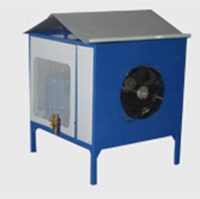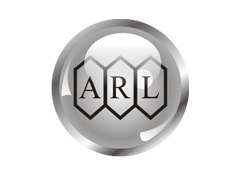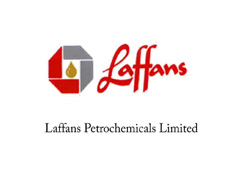
Gas Liquefaction Plant in India
Gas liquefaction is a crucial process in various industries. It involves converting gases, into liquid form. This process makes storage and transportation more efficient. At Refcon Chillers, we specialize in providing advanced gas liquefaction plants. As experienced gas liquefaction plant manufacturers, we focus on innovation and quality. Our gas liquefaction plants are designed to meet the diverse needs of our clients in different sectors.
What are Gas Liquefaction Plants?
Gas liquefaction plants facilitate the conversion of gases into liquid form. The process involves cooling gases to extremely low temperatures until they condense. This process is essential in industries like Chemical, Gases, Energy, manufacturing, and transportation.
Gas liquefaction is significant for several reasons. First, it allows for easier storage of gases, as liquids occupy much less space than gases. Second, it enables the transportation of gases over long distances. Gas liquefaction plants play a vital role in this process, making it possible to store and transport gas in liquid form safely and efficiently.
Our Gas Liquefaction Plant Solutions
Refcon Chillers offers a variety of gas liquefaction plants. Our portfolio includes small-scale, large-scale, and modular plants. Each of these types is designed to meet specific industry requirements.
We utilize advanced technologies and processes in our plants. Our systems are built with cutting-edge components to ensure high efficiency and reliability. Furthermore, we provide customization options. This allows clients to tailor their gas liquefaction plants to meet their unique operational needs. As trusted gas liquefaction plant manufacturers, we ensure that our plants incorporate the best practices in natural gas liquefaction equipment.
Features of Our Gas Liquefaction Plants
Our gas liquefaction plants come with several key features. First, they are designed for efficiency. We integrate advanced technologies, including cryogenic processes and heat exchangers. These features help to maximize the performance of our plants.
Safety is also a top priority. We ensure that our plants comply with industry standards and regulations. This commitment to safety helps protect workers and equipment alike.
Also, our natural gas liquefaction plant offers scalability. As your business grows, our systems can be adjusted to accommodate increased demand. The benefits of our plants include cost-effectiveness, energy efficiency, and reliability.
Gas Liquefaction Equipments
We provide a wide range of natural gas liquefaction equipment. This includes essential components such as compressors, condensers, evaporators, Electrical Panel etc . Each piece of equipment plays a critical role in the gas liquefaction process.
Why Choose Us as Your Gas Liquefaction Plant Manufacturer?
Choosing Refcon Chillers means partnering with a company that has extensive experience in the gas liquefaction industry. Our team is composed of experts dedicated to providing innovative solutions. We have a proven track record of delivering high-quality plants that meet our clients' needs.
As one of the reliable gas liquefaction plant manufacturers, we value customer satisfaction highly. Testimonials from previous clients highlight our commitment to quality and support. We are proud of our certifications and industry recognition. These achievements showcase our dedication to excellence. Our global reach ensures we can serve clients in various locations, providing support whenever it is needed.
Industries We Serve
Our gas liquefaction plant serves multiple industries. These include, industrial gases, and chemical & pharma industry etc. Each sector benefits from our advanced solutions.
For example, in the industry, our plants enable the efficient production of liquefied gas, facilitating global energy distribution. In the industrial gas sector, our solutions support the production of essential gases used in various manufacturing processes.
We have success stories from different industries that demonstrate our plants' effectiveness and versatility. Our technology supports Industries and enabling efficient production and storage of liquefied gases.
Contact Us
Are you interested in learning more about our Gas liquefaction plant solutions? We encourage you to reach out for more information or to schedule a consultation. We’re here to provide support for any questions or inquiries you may have.
- Feel free to reach out to us using the contact information below:
- Phone: +91 9324 532 595
- Email: info@refconchillers.com
For convenience, you can on 'contact us' on our website, and we will get back to you promptly.
“Our gas liquefaction plants are an ideal choice for businesses looking for efficient and reliable solutions. At Refcon, we focus on innovation and quality. We provide advanced gas liquefaction plants customized to meet the needs of industries like industrial gases, chemicals, and pharmaceuticals.
Our skilled team works closely with clients to understand their specific requirements. This helps us create solutions that improve efficiency and lower operational costs. Contact us today to see how we can help optimize your gas liquefaction process and support your business goals.
In addition to gas liquefaction plants, we also offer brine chilling plants, air conditioning systems, and commercial dehumidifiers. For more assistance, get in touch with us today.”
Frequently Asked Questions
A gas liquefaction plant is a facility that converts gases into liquid form, making it easier to store and transport.
Gas liquefaction is important because it allows for the efficient storage and transportation of gases, reducing the space needed and increasing safety.
Common gases that can be liquefied like natural gas, carbon dioxide, Oxygen etc.
The process involves cooling gases to extremely low temperatures until they condense into a liquid state.
Key equipment in gas liquefaction includes compressors, compressors, condensers, evaporators, Electrical Panel etc
-

Enquire Now




